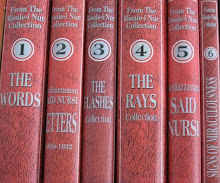Learning Outcomes
At the end of the lecture, the students should be able to;
Describe the GABAergic system in the brain. Structure, synthesis, metabolisms, factors that control the activity of the system, organizational and pathways in the brain and its functions.
Relate the functions and its organizational pathways of the neurotransmitter in the brain.
GABA
Gamma-aminobutyric acid is the non-protein amino acid. Found in nearly all pro- and eukaryotic organisms including plants.
Numerous study on the cloning of GABA receptors, GABA transporters and the enzymes responsible for GABA synthesis have confirmed the presence of GABAergic synapse throughout CNS.
It is most highly concentrated in the substantia nigra & globus pallidus nuclei of the basal ganglia, followed by the hypothalamus, the periaqueductal grey matter (“central grey”) and the hippocampus.
Occuring in 30-40% of all synapses (second only to glutamate as a major brain neurotransmitter).
The GABA concentration in the brain is 200-1000 times greater than that of the monoamines or acetylcholine.
GABA and glycine are the principles inhibitory neurotransmitter.
Synthesis
GABA is produced by the decarboxylation of glutamate
Catalysed by the enzyme glutamic acid decarboxylase (GAD).
GAD
Found in several non-neuronal tissue (including ovary and pancreas).
Within CNS it is specific marker of GABAergic neurons.
Present in the cytoplasm as both soluble and membrane-bound forms, principally
in the axon terminals.
Normally saturated with glutamate.
Activity requires the co-factor pyridoxal-5-phosphate (PLP; a form of vit B6).
Exists in two states
+ An inactive apoenzyme (apoGAD) lacking the co-factor
+ An active holoenzyme (holoGAD) complexed with PLP
Two isoforms of GAD;
In addition to the inactive and active GAD.
GAD67 and GAD65 respective molecular massess (67 and 65kDa).
Encoded by separate independently regulated genes GAD1 and GAD2.
Differ subtantially in amino acid sequence, interaction with PLP, kinetic properties and their regulation.
GAD65
Located preferentially in nerve terminal.
Not saturated with PLP.
Forms the majority of apoenzyme present in the brain.
The control of GAD activity
Feedback inhibition of GABA synthesis via promotion of conversion of GAD from
active to inactive states.
ATP appears inhibit.
Inorganic phosphate promote the reactivation of GAD by PLP.
Inhibitors of GAD
The hydrazides group such as isoniazid, semicarbazide etc.
Either directly or through interaction with the co-factor PLP.
Produces seizures in animal, reversed by Vit B6, precursor of PLP.
Intrauterine or neonatal seizures due to inherited defect in pyridoxine metabolism characterized by low GABA CSF can be treated with Vit B6.
Storage of GABA
Storage in vesicles and transported into by active transport.
The transport is dependent on a vesicular protein that transport GABA in exchange for luminal protons.
The proton electrochemical gradient is generated by H+-ATPase located in the vesicle membrane.
GABA transport is not specific; also transporting glycine.
Uptake of GABA
After release it is rapidly diffusing out of the synaptic cleft.
The ultimate removal of GABA is achieved by high affinity NA+ and Cl- dependent uptake GABA into both GABAergic neuron and glial cells.
GABA uptake coupled to the movement of Na+ down its electrochemical gradient into the cell.
Metabolism
A transamination reaction is catalysed by the mitochondrial enzyme 4-aminobutyrate aminotransferase (GABA transaminase; GABA-T).
The amino group is transferred onto the TCA cycle intermediate α–ketoglutarate, producing glutamate and succinic semialdehyde.
This synthesis and metabolism is often referred as the ‘GABA shunt’, as it acts as a shunt from α–ketoglutarate to succinate.
Majority of it is generated by means of GABA-shunt.
Pathways
GABA is found in a number or neurons
The majority are associated with the basal ganglia i.e. projections from striatum to globus pallidus and substantia nigra.
Projections from the globus pallidus and substantia nigra to several brains areas.
Outside the basal ganglia is projections is the Purkinje cell of the cerebellar cortex.
GABA is an inhibitory neurotransmitter as its principal action is to cause membrane hyperpolarization, thus reducing neuronal activity
The large number and widespread of distribution of GABAergic synapse has led to the idea that nervous system is highly restrained
GABA Receptors
Three distinct classess: GABA (B) and GABA (C)
GABA (A) and GABA (C) receptors from membrane channels (ionotropic receptors) and their activation leads to an increased permeability to chloride (Cl-) and bicarbonate (HCO3-) ions
GABA (B) receptors belong to the family of G-protein-coupled receptors (metabotropic receptors) and modify the activity the enzyme adenylate cyclase, suppress transmitter release by directly inhibiting calcium channels or hyperpolarise postsynaptic cells by activating potassium channels.
GABA (A)
The most GABA receptors in the CNS.
Binding of two molecules of GABA to the receptor causes the opening of an integral transmembrane anion channel.
Defined by their sensitivity to the antagonist bicuculline (competitive). Pirotoxin is non-competitive antagonist.
Many compounds can affect GABA (A) receptors the most important are benzodiazepines, barbiturates, neuroactive steroids and general anesthetics.
Muscimol activates GABA (A).
GABA (B)
Found in both peripheral and central.
Its action reduce the evoked release of transmitter.
The actions cannot be blocked by bicuculline and picrotoxin.
A.k.a a bicuculline-insensitive receptors.
GABA effect mimicked by butanoic acid (baclofen); muscimol does not activate and not link to Cl- channel.
GABA (C)
Was not blocked by bicuculline.
Mimicked by cis-4-aminocrotonic acid (CACA).
Shared the same properties among the GABA analogues but not interact with GABAB receptors.
Activate anions channels permeable to Cl- (and HCO3-).
Not affected by benzodiazepine, barbiturates or any anaesthetics.
Function of GABA in the Brain
Inhibitory effect in the brain.
GABA-mediated inhibition does not act solely as simple suppression of excitability
Tonic inhibitory input can transform firing pattern.
Inhibitory connections may be organised to provide negative feedback (recurrent inhibition) via networks of neurons.
By controlling precise timing of firing in multiple tragets cells inhibitory interneurons may synchronize activity and even enhance the excitatory effect
Pathophysiologically its involved in epilepsy, anxiety, sleep disorder and other mood disorders as well as altering conscious level.
Buku Politik Perlis
9 years ago
